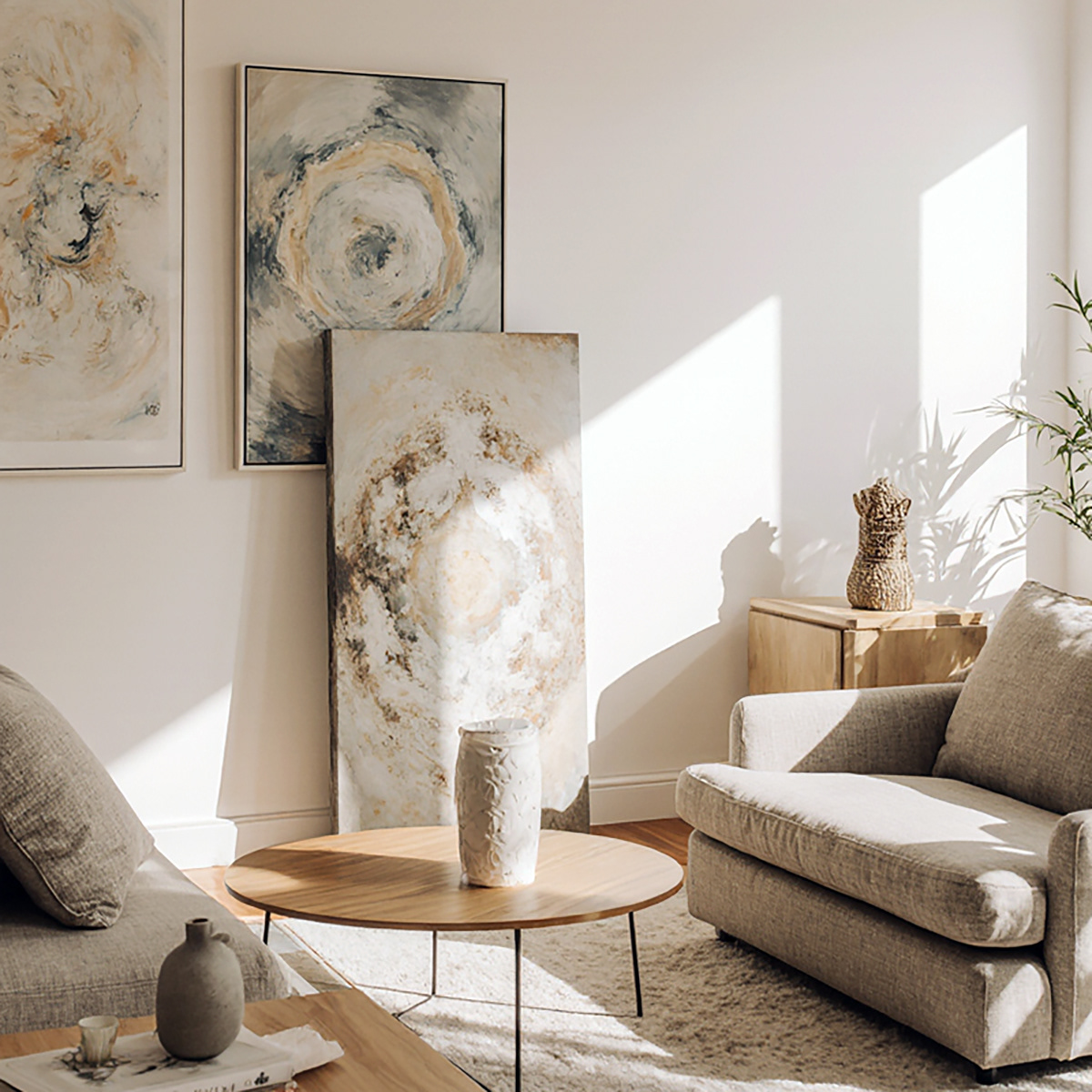Art aesthetics and interior ambience are deeply intertwined—art doesn't just occupy a space; it shapes its emotional and sensory tone. When thoughtfully integrated, artwork becomes a silent architect of atmosphere, subtly guiding how a room feels through color, form, texture, and narrative. Whether it's a minimalist painting in a serene lounge or an abstract sculpture in a dynamic foyer, the aesthetic choices in art echo throughout the interior, creating harmony, contrast, or tension that defines the space's identity and mood.
Here's a more detailed look at their relationship:
Art's Role in Interior Ambience:
Setting the Tone:
Art can establish the mood and atmosphere of a room, whether it's a calming landscape for a bedroom or a vibrant abstract piece for a living area.
Adding Depth and Texture:
Art, through various mediums like paintings, sculptures, or textiles, introduces visual and tactile interest, preventing a space from feeling flat or sterile.
Evoking Emotion and Narrative:
Art has the power to evoke feelings and tell stories, making a space more meaningful and engaging.
Reflecting Personality:
Art choices can reflect the occupant's tastes, values, and cultural background, making the space feel personal and authentic.
Interior Design's Role in Displaying Art:
Providing Context:
The overall design of a space, including its colors, furniture, and lighting, provides the context within which art is viewed and appreciated.
Creating Harmony and Balance:
Interior design principles like balance, harmony, and contrast are also relevant to art, and aligning these principles can create a cohesive and visually appealing space.
Highlighting Focal Points:
Strategic placement of art can create focal points, drawing attention to specific areas within a room.
Enhancing the Overall Experience:
The ambience of a space, including its acoustics, lighting, and scent, also plays a role in how art is perceived and appreciated, contributing to the overall experience.
Room Function:
Consider the purpose of the room when selecting art. For example, a calming landscape might be suitable for a bedroom, while a vibrant abstract piece could be ideal for a living room.
Personal Style:
Choose art that reflects your personal taste and preferences, ensuring that the space feels authentic and reflects your personality.
Color Palette:
Coordinate the colors of the art with the existing color scheme of the room to create a sense of harmony and balance.
Size and Scale:
Ensure that the size and scale of the art are appropriate for the space and the furniture it will be displayed with.
Lighting:
Pay attention to the lighting in the room and how it will affect the appearance of the art.















